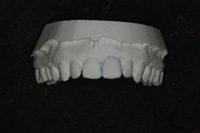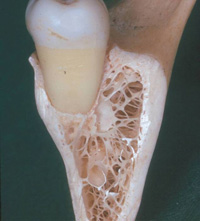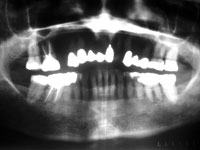 Have you ever been frustrated when a patient who would benefit from your treatment plan, and who can afford to pay, refuses to follow through with treatment? Of course, every dental team deals with this challenge on a daily basis. Maybe you are using some “killer words” that are lowering your acceptance rate.
Have you ever been frustrated when a patient who would benefit from your treatment plan, and who can afford to pay, refuses to follow through with treatment? Of course, every dental team deals with this challenge on a daily basis. Maybe you are using some “killer words” that are lowering your acceptance rate.
Lecturing around the country has revealed some interesting facts to me. Most dentists tell me their case acceptance rate is between 60% and 90%. However, their front desk teams tell me it’s between 30% and 40%. Why the discrepancy? It’s natural for patients to agree with the dentist’s reasoning for treatment, but when confronted with the financial reality of accepting treatment at the front desk, many back out. Then the doctor asks the front desk, “What happened to Mrs. Jones? Why didn’t she appoint? She agreed with my treatment recommendations.”
Fact of Life: Agreeing with your doctor’s treatment recommendations is not the same as agreeing to pay for it.
The good news is there is something you can do about this. Make an effort to eliminate “killer words,” and you will become a more effective communicator. Additionally, the use of “success words” will assist you in coaching (educating) patients to want and be willing to pay for treatment. Replace killer words with success words (Table).
NEED VERSUS POSSIBLE
Dentists often say the patient needs a crown or a bridge. Wrong! There are five fundamental needs for human beings: air, water, food, shelter, and freedom from pain. People only need dentistry when they are in pain. How many of your daily patients come to you in pain? Seminar audiences tell me it’s less than 10%. So, when a patient is told they need a crown, a bridge, or periodontal surgery, their brain says, “I don’t hurt, so I don’t actually need this treatment/expense.”
The more effective way of communicating is by creating an image in the patient’s mind of physical or emotional pain as a consequence of not following through with treatment and dealing with the problem.
| Table. Killer Words Versus Success Words |
| Killer Words |
Success Words |
| Need |
Possible |
| Should |
Choose/Choice |
| But |
And/Because |
| Try |
Will |
| Can’t |
Don’t want to |
| Have to |
Choose to |
| Policy/rules |
Guidelines |
|
Ineffective: “Ms. Jones, you have several large fillings that are cracked, and we need to put crowns on them.”
Effective: “Ms. Jones, you have several large fillings with cracks. These cracks allow germs to get under the fillings and cause decay. If left untreated, the decay will eventually attack and kill the nerves in those teeth, cause toothaches, and result in either root canals or loss of the teeth. If I were in your position, knowing what I know, I would choose to eliminate these possible consequences and have crowns put on them before any more damage is done. Now, what do you want to do? What do you feel is the best course of action?”
When the patient says, “Yes,” they have done more than agree with you—they’ve told you what they want in light of the consequences you helped them understand.
SHOULD VERSUS CHOOSE/CHOICE
It’s common to hear dentists/staff say, “Mr. Patient, you should brush and floss your teeth every day.” Fact of Life: People do not do what they should do. They do what they want to or choose to do.
Use this approach: “Mr. Patient, if you don’t brush and floss your teeth every day, your gum disease will only get worse. You will get more cavities, which means you’re heading toward more dental work, ultimately gum surgery, losing your teeth, and unnecessary pain and expense. You don’t want that, do you? The healthy choice for you is to brush and floss your teeth every single day. If you do that and see me for regular visits, you can count on keeping your teeth for a long time. So you have two choices: (1) continue your current home care habits, lose teeth, have more dental work and significantly more dental expense; or (2) choose to brush and floss every day, come in for regular hygiene appointments, enjoy excellent dental health, and save money. So, Mr. Patient, the choice is yours. Which results do you want?”
Many more (although not all) patients will make the choice that’s best for them in the long run. Because of your more effective communication, it’s a win-win situation. The patient wins with better health, and you win by gaining patient acceptance.
BUT VERSUS AND/BECAUSE
“But” is a killer word because it erases what’s just been said, eg, “Those are great looking shoes, but why did you wear them with those pants?” In this case, the “but” precedes a put-down or criticism. When people use the word “but,” what follows is dialogue that makes you wrong. “But” is often used to interrupt your conversation so the other person can win the argument—to make themselves right.
As Steven Covey wrote in his book, Seven Habits of Highly Successful People, “The ‘but’ word is used by people who listen to respond (win) as opposed to people who listen to understand (win-win).”
Personally, eliminating the word “but” from my daily conversations was one of the hardest things I ever did. Why? Because I’ve always liked to be right. Ultimately, always being right was too hard to do, so I gave it up.
For example, when a patient is in for a major consult and seems to have lost enthusiasm for treatment, stop the consult and ask what’s bothering her. When she says, “It’s just too much money,” or “My spouse says we can’t afford it,” etc, say the following: “I understand how you feel, Mrs. Smith. Many of our patients have felt the same way, and (not but) what they’ve found is choosing the comprehensive dental care they deserve was one of the best investment decisions they’ve ever made because they use their teeth every day and because good dentistry lasts a long, long time.”
Using “feel, felt, found” will put you in an empathetic frame of mind. Your tone of voice will automatically become more empathetic, and therefore more effective.
In American culture it’s not what you say, it’s how you say it that has power and influence.
TRY VERSUS WILL
If a person is capable of doing what is asked of them, then it’s not possible to “try.” Therefore, when someone says, “I’ll try to remember my appointment,” or “I’ll try to make it back from lunch on time,” or “I’ll try to make my payment on time,” know that the person does not want to do what you’ve asked. He may have no intention of doing it. He may just not have the courage to tell you.
For example: “I’ll try to make my payment by the 10th of the month.” Response: “Mr. Jones, trying is not satisfactory. It’s important for us to know what you will do.” Or you could say with an irreverent smile, “Mr. Jones, if you’ll try to make your payment, then I’ll tell the doctor to try and do good dentistry for you. Mr. Jones, which would you prefer—that the doctor tries, or that the doctor actually does good dentistry for you?”
As Yoda said in the film, The Empire Strikes Back, “There is no such thing as try, there is only do, or do not.” When you treat patients like adults and expect mature behavior, most of them will act like adults and honor their commitments.
CAN’T/HAVE TO VERSUS DON’T WANT TO/CHOOSE TO
“Can’t” and “have to” are victim words. They have a debilitating effect when used in self talk, eg, “Our patients can’t afford elective dentistry,” or “I have to treatment plan according to insurance coverage because my patients won’t accept and/or pay for elective care.”
There are only two things in this world every person has to do. One is to die and the other is to (no, it’s not pay taxes) live until they do. Everything else in-between is a choice. So when we think or say our patients can’t afford elective care, we’re actually saying patients don’t want to invest in themselves with elective care.
Solution: Simply change “have to” thoughts to the following. “I choose to do a comprehensive treatment plan for each patient because they deserve to know about and understand the best that dentistry has to offer them. Also, I choose to effectively communicate the real consequences patients will experience if comprehensive treatment is not implemented.”
Daily life in a dental office is all about choice. Even coming to work each day is a choice doctor and staff make. Why do people come to work when they don’t feel like it? Because relative to the consequences of not coming in, being at the office is the preferred choice. This concept also works well for curing chronic no-show or late cancellation patients. The goal is to educate patients about the consequences of missing appointments so they will choose to honor their commitments. It’s amazing what happens to these patients’ attitudes when you say, “I’ll let it go this time, Mr. Jones, but from now on you will be charged the full value of a missed appointment unless we receive at least 24 hours notice in advance.” This one phrase will shape up many of your chronic problem patients. Some of them will leave the practice—that’s also a plus because then the schedule will be based on reality instead of hope.
POLICY/RULES VERSUS GUIDELINES
Policies and rules make an organization rigid and deprive people of the flexibility to make decisions based on their common sense. Policies and rules must be replaced by common sense guidelines for an entrepreneurial dental practice to thrive. When a practice has flexible guidelines, the whole team is then empowered to use their best judgment to do or say what is necessary to create a situation where the patient, the team, and the practice win.
Example: It’s November and a long time, good paying patient wants six anterior veneers for $4,800. The patient says, “I’ll have to wait until I get my tax return in April.” If the policy is half down and the balance upon seating, the patient has to wait 6 months, and the doctor doesn’t get to do the treatment until April. Within the 6 months a new SUV or red convertible may catch the patient’s eye, and there goes their tax refund and the treatment plan. With flexible financial guidelines, the financial coordinator would say, “Mr. Jones, we’re not worried about you paying your bill. The doctor wants you to have your veneers. With $500 down and $200 per month for 6 months, you can enjoy having a beautiful smile and pay the remaining $3,100 when you get your tax refund in April. Will that work for you (or in your budget)?” Or, “How does that sound to you?”
You can see that flexibility with good paying patients of record can and will enhance productivity and profitability. The secret is to develop an entrepreneurial mindset where the team is empowered to participate and use their common sense to benefit the patients and the practice. The long-term result of this approach is a doctor-led and staff-managed practice. In this environment, the doctor’s focus is on comprehensive treatment planning and delivering quality work. The staff takes care of organizing patient and income flow. The result is more enjoyable days and a more profitable practice. Flexibility is actually empowerment.
CONCLUSION
By eliminating the use of killer words, anyone can become a more effective communicator. Increased effective communication = increased case acceptance = increased profits and professional satisfaction. Doesn’t replacing killer words with success words feel like a wise choice to make?
Mr. Johnson is an in-office consultant and speaker with clients in 36 states. His focus is on fee-for-service dentistry through leadership, effective communication, and team motivation. He has coached over 55 comprehensive cosmetic care/treatment planning study clubs. For information on Mr. Johnson’s in-office consulting or seminars, he can be reached at (800) 371-3147 or GLJseminars@msn.com.
 Have you ever been frustrated when a patient who would benefit from your treatment plan, and who can afford to pay, refuses to follow through with treatment? Of course, every dental team deals with this challenge on a daily basis. Maybe you are using some “killer words” that are lowering your acceptance rate.
Have you ever been frustrated when a patient who would benefit from your treatment plan, and who can afford to pay, refuses to follow through with treatment? Of course, every dental team deals with this challenge on a daily basis. Maybe you are using some “killer words” that are lowering your acceptance rate.










